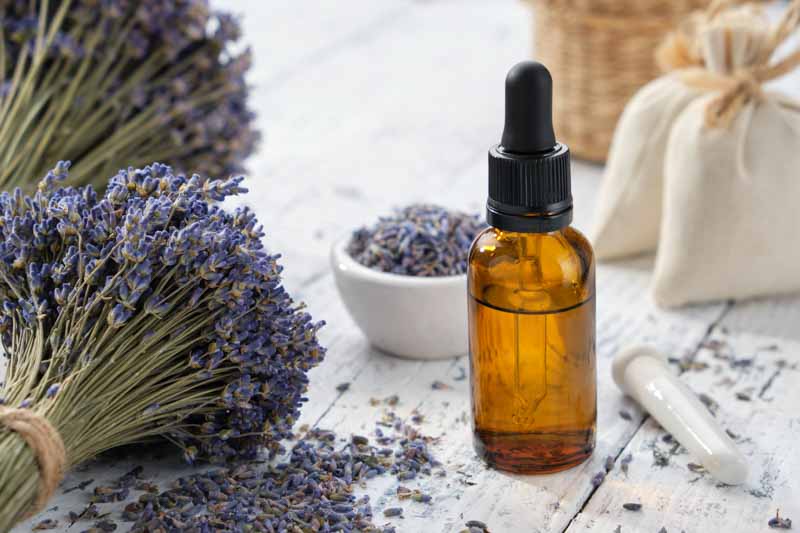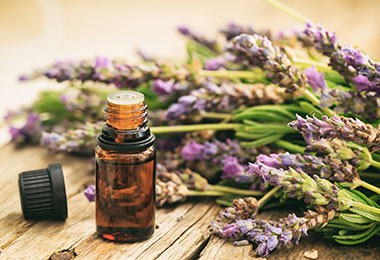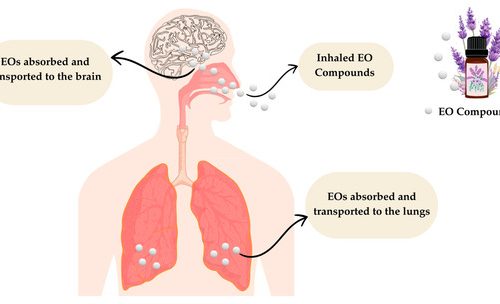Spraying essential oils offers one of the most versatile and convenient methods for experiencing aromatherapy benefits throughout your living and working spaces. Whether creating a refreshing room mist, a personal linen spray, or a targeted therapeutic treatment, spray applications allow for precise control over distribution and concentration. This method combines the immediate impact of inhalation with the flexibility of customizable blends, making it an ideal choice for everything from mood enhancement to environmental purification.
The beauty of essential oil sprays lies in their adaptability – a single technique can produce everything from a quick pick-me-up mist to an elaborate seasonal room fragrance. With proper formulation and application methods, you can transform any space into a personalized aromatic environment while maintaining complete control over ingredients and concentrations. Understanding the principles of effective spray creation ensures that your aromatic mistings provide consistent, safe, and enjoyable experiences.
Introduction to Essential Oil Sprays
Understanding the versatility and benefits of spray applications:
Advantages of Spray Application
- Wide Distribution: Sprays can quickly disperse oils throughout a room or target specific areas
- Controlled Dosing: Easy to adjust concentration and application amount
- Immediate Impact: Rapid onset of aromatic benefits through inhalation
- Portability: Small spray bottles make aromatherapy mobile and accessible
- Cost Effectiveness: Small amounts of oil can treat large areas efficiently
Common Applications
- Room Freshening: Natural alternative to synthetic air fresheners
- Linen Sprays: Fabric-friendly treatments for bedding and clothing
- Personal Misting: Body sprays for quick refreshment and scent
- Therapeutic Treatments: Targeted applications for specific wellness needs
- Surface Cleaning: Antimicrobial sprays for natural home cleaning
The Basic Formula
Understanding the fundamental components of effective essential oil sprays:
Core Spray Components
- Distilled Water: Primary base that makes up 80-95% of most sprays
- Solubilizer: Agent that helps oils mix with water (witch hazel or vodka)
- Essential Oils: Concentrated plant essences that provide therapeutic benefits
- Optional Additives: Preservatives, emollients, or additional therapeutic ingredients
- Gather Ingredients: Collect all components and ensure spray bottle is clean
- Add Solubilizer: Pour 1-2 tablespoons of witch hazel or vodka into the bottle first
- Incorporate Oils: Add essential oils and shake gently to combine
- Fill with Water: Top off with distilled water, leaving space for shaking
- Mix Thoroughly: Shake vigorously to emulsify all ingredients
- Label Clearly: Mark with contents, concentration, and preparation date
Recipe 1: All-Purpose Room Spray
A versatile blend suitable for most environments:
Energizing Room Mist
- 4 ounces distilled water
- 1 tablespoon witch hazel
- 10 drops lemon essential oil
- 8 drops peppermint essential oil
- 5 drops tea tree essential oil
- Prepare Container: Use a 4-ounce glass spray bottle and ensure it’s clean
- Add Solubilizer: Pour witch hazel into the bottle first
- Essential Oils: Add lemon, peppermint, and tea tree oils in sequence
- Water Addition: Fill with distilled water, leaving 1/2 inch headspace
- Mix Thoroughly: Shake vigorously for 30 seconds to combine ingredients
- Settle Time: Allow to sit for 10 minutes before first use
- Application: Spray 3-5 pumps into the air, avoiding direct contact with people
Usage Guidelines
- Shake well before each use as ingredients may separate
- Store in a cool, dark place to preserve oil integrity
- Use within 2-3 weeks for optimal freshness
- Avoid spraying directly on surfaces that may stain
Recipe 2: Calming Linen Spray
A gentle blend perfect for bedding and fabrics:
Relaxing Bedtime Mist
- 4 ounces distilled water
- 1 tablespoon vodka (or witch hazel for non-alcoholic version)
- 8 drops lavender essential oil
- 5 drops chamomile essential oil
- 3 drops bergamot essential oil
- Select Bottle: Use a fine-mist spray bottle to prevent over-saturation of fabrics
- Add Alcohol Base: Pour vodka or witch hazel into the bottle first
- Blend Oils: Add lavender, chamomile, and bergamot oils in order
- Complete with Water: Fill with distilled water, leaving adequate headspace
- Emulsify: Shake vigorously for 30-60 seconds to blend thoroughly
- Rest Period: Allow mixture to settle for 15 minutes before first use
- Fabric Application: Lightly mist pillows and bedding from 6 inches away
Fabric Care Tips
- Test on hidden fabric area before full application
- Always spray from a distance to avoid over-saturation
- Allow fabrics to dry completely before contact
- Reapply as needed throughout the week for continued benefits
Safety Considerations
Ensuring safe and effective spray applications:
General Safety Guidelines
- Ventilation: Use sprays in well-ventilated areas to prevent overwhelming concentrations
- Eye Protection: Avoid spraying near faces and always close eyes when mist is present
- Skin Sensitivity: Test new blends on small skin area before widespread use
- Surface Testing: Check for staining or damage on delicate surfaces
Special Population Considerations
- Pregnancy: Avoid certain oils and reduce concentrations during pregnancy
- Children: Use extra dilution and gentle oils for young family members
- Respiratory Conditions: Asthma and allergy sufferers should introduce sprays gradually
- Elderly Individuals: May be more sensitive to strong aromatics; adjust accordingly
Equipment and Storage
Selecting proper tools and maintaining quality:
Spray Bottle Selection
- Glass vs. Plastic: Glass bottles prevent chemical leaching and preserve oil quality
- Mist Types: Fine mist for linen sprays, wider spray for room applications
- Size Considerations: 2-4 ounce bottles for personal use, larger for room applications
- Spray Mechanism: Ensure nozzle is clean and functions smoothly
Storage Best Practices
- Light Protection: Store in dark cabinets or use amber glass bottles
- Temperature Control: Keep in cool areas away from heat sources
- Shelf Life: Most sprays last 2-4 weeks; refrigeration can extend freshness
- Labeling: Clearly mark contents, preparation date, and usage instructions
Troubleshooting Common Issues
Addressing problems that may arise during preparation or use:
Mixing Problems
- Separation: Normal for oil and water mixtures; shake before each use
- Clogged Nozzles: Clean with warm water and vinegar solution regularly
- Weak Scent: Increase oil concentration or reduce water content slightly
- Cloudy Appearance: Usually indicates proper emulsification; shake well before use
Application Challenges
- Over-Saturation: Reduce spray duration or distance from target surface
- Uneven Distribution: Use consistent spraying technique and motion
- Staining: Test on hidden areas first and avoid over-application
- Rapid Evaporation: Increase witch hazel or alcohol content slightly
Advanced Formulations
Enhancing spray effectiveness with specialized techniques:
Therapeutic Muscle Relief Spray
- 4 ounces distilled water
- 2 tablespoons witch hazel
- 10 drops peppermint essential oil
- 8 drops eucalyptus essential oil
- 5 drops wintergreen essential oil
- 1 teaspoon aloe vera gel
This enhanced formula combines the cooling effects of peppermint with anti-inflammatory properties for targeted muscle support.
Immune Support Room Spray
- 4 ounces distilled water
- 1 tablespoon vodka
- 12 drops tea tree essential oil
- 10 drops eucalyptus essential oil
- 8 drops lemon essential oil
- 5 drops rosemary essential oil
A purifying blend designed to create a cleaner indoor environment during cold and flu season.
Seasonal and Specialized Applications
Adapting sprays for specific needs and times:
Seasonal Variations
- Spring Refresh: Light citrus and floral blends to welcome new growth
- Summer Cooling: Mint and cucumber combinations for refreshing effects
- Fall Warmth: Spicy oils like cinnamon and clove for cozy atmospheres
- Winter Comfort: Pine and frankincense for grounding, peaceful environments
Situation-Specific Blends
- Entertaining: Uplifting combinations like grapefruit and rosemary for welcoming spaces
- Work Focus: Clarifying oils like eucalyptus and lemon for enhanced concentration
- Recovery: Soothing blends like lavender and chamomile for rest and healing
- Meditation: Grounding scents like sandalwood and frankincense for spiritual practice
Environmental and Economic Benefits
Natural sprays offer advantages beyond personal wellness:
Eco-Friendly Aspects
- Reduced Chemicals: Eliminate synthetic air fresheners and aerosol products
- Biodegradable Ingredients: Pure essential oils break down naturally in the environment
- Minimal Packaging: Reusable spray bottles reduce single-use product waste
- Sustainable Sourcing: Many oils come from renewable plant sources when ethically produced
Cost Effectiveness
- Long-Lasting Oils: Small bottles provide months of use when properly diluted
- Multi-Purpose Use: Same oils can be used for massage, diffusing, and personal care
- Reduced Commercial Products: Less need for separate air fresheners and synthetic fragrances
- Batch Preparation: Make larger quantities for better value and consistency
Educational and Social Benefits
Beyond immediate use, spray creation offers learning opportunities:
Botanical Knowledge
- Plant Properties: Learn about the therapeutic characteristics of different botanical species
- Extraction Methods: Understand how oils are obtained from various plant parts
- Chemical Composition: Explore how different molecular structures create varying effects
Community Engagement
- Gift Giving: Package custom blends as thoughtful, personalized presents
- Skill Sharing: Teach friends and family about safe aromatherapy practices
- Workplace Wellness: Create office-friendly blends for shared environments
Special Considerations
Adapting spray use for specific needs and circumstances:
Sensitive Environments
- Healthcare Settings: Use antimicrobial oils with medical approval
- Office Spaces: Choose neutral, non-distracting scents that enhance rather than overwhelm
- Educational Environments: Select oils known to support focus without causing drowsiness
Technical Enhancements
- Preservation: Add natural preservatives like vitamin E oil for extended shelf life
- Emulsification: Use plant-based solubilizers for better ingredient integration
- Customization: Develop signature blends that reflect personal preferences
Conclusion: The Versatility of Aromatic Misting
Essential oil sprays represent one of the most accessible and adaptable methods for incorporating aromatherapy into daily life. Their simplicity of preparation, combined with the wide range of possible applications, makes them an ideal entry point for those new to essential oils while offering sophisticated customization options for experienced practitioners. The ability to quickly transform any environment with a few spritzes of carefully crafted aromatic mist creates opportunities for immediate wellness benefits throughout your day.
The beauty of spray applications lies in their democratization of aromatherapy – no special equipment or extensive training is required to create effective, pleasant, and therapeutic mists. This accessibility allows anyone to experiment with different oil combinations, adjust concentrations to personal preferences, and develop signature blends that reflect individual needs and tastes. The process of creating and using these sprays becomes a form of mindful practice that connects you to the therapeutic properties of plants while enhancing your immediate environment.
As you develop your skills in spray formulation and application, you’ll discover that this method offers unique advantages over other aromatherapy techniques. The combination of immediate atmospheric impact with portable convenience makes sprays perfect for everything from quick stress relief to creating welcoming environments for guests. The visual and tactile aspects of spraying – the fine mist, the immediate release of fragrance, the transformation of space – engage multiple senses and create a more immersive aromatic experience.
Most importantly, essential oil sprays empower you to take control of your sensory environment in a natural, customizable way. Rather than being subject to the synthetic scents and chemical fragrances that pervade many commercial spaces, you can create exactly the atmosphere that supports your well-being and reflects your personal preferences. In doing so, you’re participating in a growing movement toward more mindful, health-conscious living that honors both personal wellness and environmental responsibility.
As you continue your journey with essential oil sprays, allow yourself to experiment and discover which scents and combinations resonate most deeply with your needs and preferences. The world of aromatherapy is vast and varied, offering endless possibilities for creating the perfect mist for every moment and mood in your life.





